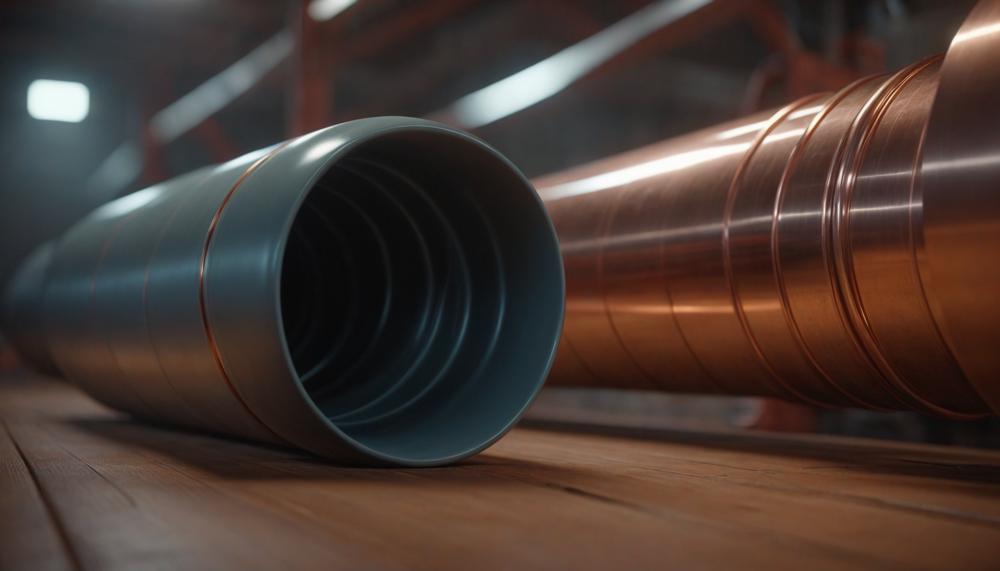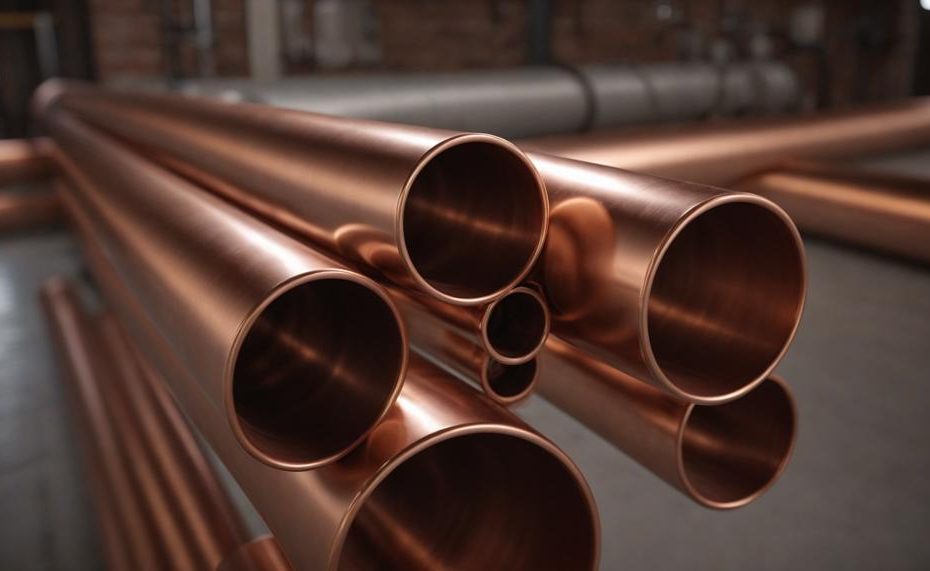Diving into the world of DIY plumbing projects can often feel like navigating through a maze of materials and techniques, especially when you’re looking to mix mediums like PVC and copper piping. Whether you’re a homeowner looking to tackle a quick repair or an enthusiastic DIYer embarking on a new project, the challenge of connecting these two materials without welding might seem daunting at first glance. Yet, with the right approach and tools, it’s a task that’s both manageable and rewarding.
In this blog post, we’ll explore the ins and outs of connecting PVC pipe to copper pipe without the need for welding. You’ll come away with:
- An understanding of the tools and materials needed for a seamless connection.
- Step-by-step guidance on achieving a strong, leak-free bond.
- Insights into the best practices and tips from plumbing professionals.
Ready to bridge the gap between PVC and copper in your next plumbing project? Let’s dive in and discover how to do it efficiently and effectively.
Compression Fitting Method
The Compression Fitting Method is a clever and uncomplicated approach for joining PVC and copper pipes without the need for welding or soldering.
This technique is a boon for DIY enthusiasts and professionals alike, offering a straightforward solution for blending the distinct worlds of plastic and metal piping in plumbing systems.
Step-by-Step Guide to Using the Compression Fitting Method:
Preparation
- Ensure the diameters of both PVC and copper pipes are accurately measured for a snug fit.
- Clean and deburr the pipe ends to prevent any interference during connection.
Selection of Compression Fitting
- Opt for a fitting that aligns with your pipe measurements. Remember, these come in various sizes and styles.
Assembly:
- Slide the compression nut onto the copper pipe, followed by the compression ring.
- Insert the copper pipe into one end of the PVC pipe, ensuring it meets the PVC snugly.
- Fit the other end of the PVC pipe into the compression seat of the fitting.
Securing the Connection:
- Tighten the compression nut onto the fitting to compress the ring, creating a watertight seal between the PVC and copper pipes. Tightening specifics can vary, so adhering to the manufacturer’s guidance is paramount.
Table: Components of a Compression Fitting
| Component | Function | Description |
| Compression Nut | Secures the fitting | Threads onto the fitting, applying pressure to the compression ring |
| Compression Ring | Forms the seal | Sits between the pipe and nut, compressing to form a tight seal |
| Compression Seat | Holds the pipe | The end into which the pipe is inserted before compression |
Advantages:
- No Special Tools Required: This method is brilliantly straightforward, needing only basic tools for tight connections.
- Versatility: Ideal for a plethora of projects, suitable for above and below-ground applications.
- Reusable: A sustainable choice, allowing for disassembly and reuse in future modifications or repairs.
In essence, the compression fitting method serves as a bridge, enabling the fusion of PVC and copper pipes with ease and reliability. It’s a testament to ingenuity in plumbing, allowing for durable connections without the heat of welding or the mess of adhesives.

Push-Fit Fitting Method
The Push-Fit fitting method is a swift, reliable way of joining pipes without the need for welding or soldering. This innovative approach uses unique fittings that allow for the seamless connection of different types of pipes, such as PVC and copper.
These fittings are designed with a special internal mechanism that grips the pipe securely when it’s pushed in, creating a watertight and durable bond.
How It Works: Joining PVC to Copper
Push-Fit fittings are ingeniously simple. They consist of a body, usually made of durable plastic or metal, and contain stainless steel teeth that clasp the pipe, and a rubber O-ring that seals it against leakage. Here’s how they bridge the gap between PVC and copper pipes:
- Preparation: Ensure the ends of both PVC and copper pipes are cut cleanly and are free of any burrs or debris.
- Insertion: Push the end of either pipe straight into the fitting until it meets resistance. The fitting’s mechanism locks onto the pipe securely.
- Connection Complete: Just like that, the connection is made. The pipe can withstand water pressure and is sealed against leaks.
Benefits and Considerations
| Advantages | Considerations |
| No special tools required | Cost slightly higher than traditional methods |
| Quick and simple installation | Ensure proper insertion for a secure fit |
| Can be easily removed and reused | Not all plumbers prefer them for permanent solutions |
| Eliminates the need for welding | Check compatibility with pipe materials |
By using the Push-Fit method, DIY enthusiasts and professionals can save time while ensuring a robust, leak-free connection between PVC and copper pipes, sidestepping the complexities and hazards of welding.
Transition Couplings
Transition couplings stand as a sterling choice for connecting PVC pipe to copper pipe, dodging the complexities and hazards of welding. Crafted from robust, yet pliable materials like rubber, these couplings assure a snug, leak-proof union between disparate pipe types.
Their utility is further enhanced by the availability in various sizes and configurations, accommodating an array of pipe diameters and connections.
Ease of Use:
The beauty of transition couplings lies in their simplicity. Unlike welding, which demands specific gear and know-how, applying these couplings requires no special tools or skills.
This simplicity renders them an accessible option for both seasoned plumbers and DIY aficionados.
Installation Steps:
Prepare the pipes by cutting to length and cleaning the ends to ensure they’re free from grime.
Slip the transition coupling over one pipe end, then insert the counterpart pipe into the coupling.
Secure the coupling with a wrench, achieving a tight, weld-free seal.
Flexibility and Versatility:
Beyond their primary function, transition couplings accommodate slight pipe movements due to temperature or pressure changes, maintaining a steadfast seal. Their utility isn’t confined to PVC and copper; they’re equally adept at joining other pipe materials like galvanized steel or PEX, showcasing their versatility.
| Feature | Benefit | Application |
| No Welding Needed | Safer and easier to use | DIY and professional plumbing |
| Flexible Material | Leak-proof connection | Varied pipe materials |
| Versatile Use | Useful for multiple pipe types | PVC to copper, galvanized steel, PEX |
Conclusion
Navigating through the blend of PVC and copper pipes in DIY plumbing ventures unveils a realm where traditional welding steps aside, making room for ingenious, weld-free connections.
Emphasizing mechanical joining, the article shines a light on methods like the use of compression fittings, push-fit fittings, transition couplings, and dielectric unions as pivotal strategies. Each method, from the precision of compression fittings to the simplicity of push-fit solutions, the adaptability of transition couplings, and the protective prowess of dielectric unions, offers a unique pathway to fuse these disparate materials without the high heat of welding.
Engaging with these methods transforms the daunting into the doable, illustrating that connecting PVC to copper pipes transcends mere functionality—it embodies a harmonious blend of innovation and practicality.





